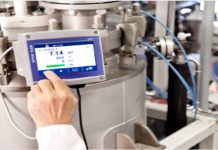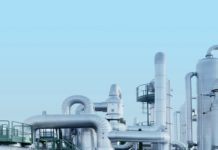Abstract
This article explores energy efficiency in manufacturing as a vital strategy for reducing costs and environmental impact, highlighting technologies and practices that optimize energy use and enhance sustainability.
Introduction
In an era where climate change is a pressing concern and energy costs are on the rise, energy efficiency in the industrial sector emerges as a critical solution. Industries such as semiconductors, steel, ceramics, and paper are particularly affected by soaring energy prices, which escalate operational expenses and challenge profitability. Energy efficiency, often referred to as the “fifth fuel” alongside coal, gas, nuclear, and renewables, offers a pathway to not only mitigate these costs but also significantly reduce carbon emissions. By optimizing energy use, manufacturers can achieve economic viability while simultaneously addressing environmental responsibilities. This article delves into the various strategies and technologies available to enhance energy efficiency in manufacturing, highlighting the benefits of implementing Energy Management Systems (EMS), leveraging digitalization, and integrating advanced technologies. As organizations navigate the complexities of energy consumption, understanding these practices will empower engineers and manufacturers to contribute to a more sustainable and cost-effective future.
Energy Efficiency
Energy efficiency in the industrial sector has a vital role in reducing fossil fuel utilisation and tackling climate change. Soaring energy costs are leading to a surge in operational expenses, especially in energy-intensive industries like semiconductors, steel, ceramic, and paper. Energy efficiency, considered the fifth fuel after coal, gas, nuclear, and renewables, is the key to keeping energy demands economically and environmentally prudent in manufacturing and the fastest and least expensive way to reduce a plant’s carbon footprint. Let’s have a look at the ways to achieve energy efficiency in manufacturing.Energy Management System (EMS) is a solution to visualise, monitor, and analyse energy consumption. EMSs, with AI and IoT, collect and analyse real-time energy data. With an EMS, the dynamic utilisation of plant machinery can be compared against defined target utilisation to identify deviations, allowing optimisation of operations for energy efficiency. Machines are made up of various energy-consuming parts. These parts generate unique energy profiles when they are in operation. An EMS enables the analysis of energy profiles for variable production levels, generating detailed information about energy consumption to identify problems. ML-based predictive analytics can analyse vast volumes of load, generation, and energy storage data.
Digitalisation
The digitalisation of the plant floor can significantly impact energy efficiency. With IoT and AI, proactive equipment fault detection and diagnosis is possible. Digital technologies provide real-time monitoring of manufacturing machines and processes, analyse system behaviour, detect new fault types, and predict failures based on historical and real-time data. AI-enabled proactive and effective maintenance optimises machine configuration and minimises energy consumption. It also prevents breakdowns and, consequently, avoids energy-intensive restarts. There is considerable room for improving energy efficiency in temperature management for production processes through digitalisation. When temperatures are extreme, even slight variations greatly affect energy utilisation and product quality. Digital technologies can improve energy efficiency through real-time monitoring, effective maintenance management, and optimisation of the manufacturing environment and process through intelligent analytics. With digitalisation in manufacturing, energy efficiency can be genuinely regarded as the fifth fuel. Energy efficiency manufacturing is the practice of using less energy to produce the same amount of goods. This involves optimizing production processes, upgrading equipment, and implementing energy-saving technologies.
Cost Benefit
By reducing energy consumption, manufacturers can lower costs, minimize environmental impact, and improve overall efficiency. This involves integrating advanced technologies, improving process management, and adopting best practices that reduce energy waste. Imagine a factory that produces goods using machinery and equipment. By implementing energy-efficient technologies, such as high-efficiency motors, LED lighting, and automated control systems, the factory can reduce its energy consumption significantly. Additionally, process optimization techniques, like adjusting production schedules to avoid peak energy usage times, contribute to overall energy savings. Energy efficiency manufacturing is not just about cutting costs; it also plays a vital role in reducing the carbon footprint of industrial operations. By using less energy, factories can decrease greenhouse gas emissions, contributing to environmental sustainability.
The benefits of energy efficiency in manufacturing are numerous and impactful, affecting both the bottom line and the environment
- Cost Savings: One of the most significant advantages is cost savings. By reducing energy consumption, manufacturers can lower their utility bills, which can be a substantial part of operating expenses. These savings can be reinvested into the business, driving further improvements and innovation.
- Environmental Impact: Energy efficiency contributes to a reduction in greenhouse gas emissions, helping combat climate change. By using less energy, manufacturers can minimize their carbon footprint and promote sustainable practices.
- Enhanced Competitiveness: Energy-efficient practices can enhance a company’s competitiveness. Lower energy costs mean lower production costs, which can translate into lower prices for customers or higher profit margins. Additionally, companies committed to sustainability can attract environmentally conscious consumers and investors.
- Improved Operational Efficiency: Implementing energy-efficient technologies often leads to improved operational efficiency. Modern equipment and optimized processes reduce downtime, enhance productivity, and extend the lifespan of machinery.
- Regulatory Compliance: Adhering to energy efficiency standards helps companies comply with regulations and avoid potential fines. Many regions have stringent energy regulations, and being proactive in energy management can ensure compliance and avoid legal issues.
Several key techniques and technologies are essential for achieving energy efficiency in manufacturing
- High-Efficiency Motors: Replacing old, inefficient motors with high-efficiency models can lead to significant energy savings. These motors use less power to perform the same tasks, reducing energy consumption without compromising performance.
- LED Lighting: Switching to LED lighting is a simple yet effective way to reduce energy usage. LEDs consume less power and have a longer lifespan compared to traditional lighting options, resulting in lower energy bills and maintenance costs.
- Variable Frequency Drives (VFDs): VFDs adjust the speed of motors to match the actual demand, preventing energy waste. By optimizing motor speed, VFDs can significantly reduce energy consumption, especially in processes with varying load requirements.
- Energy Management Systems (EMS): EMS monitor, control, and optimize energy usage throughout the manufacturing process. These systems provide real-time data on energy consumption, helping identify areas for improvement and ensuring efficient energy use.
- Process Optimization: Optimizing manufacturing processes can lead to substantial energy savings. Techniques such as lean manufacturing, which focuses on minimizing waste, and just-in-time production, which reduces excess inventory, contribute to energy efficiency.
- Renewable Energy Integration: Integrating renewable energy sources, such as solar or wind power, into manufacturing operations can further enhance energy efficiency. On-site renewable energy generation reduces reliance on external energy sources and promotes sustainability.
Conclusion
In conclusion, energy efficiency in manufacturing is a critical strategy for reducing operational costs, minimizing environmental impact, and enhancing overall productivity. For newly joined engineers, understanding and implementing energy-efficient practices is essential for contributing to the success and sustainability of their organizations. By leveraging advanced technologies, optimizing processes, and adopting best practices, manufacturers can achieve significant energy savings and operational improvements. Real-world examples from industry leaders like General Motors, Siemens, Toyota, and Coca-Cola demonstrate the tangible benefits of energy efficiency initiatives.
































